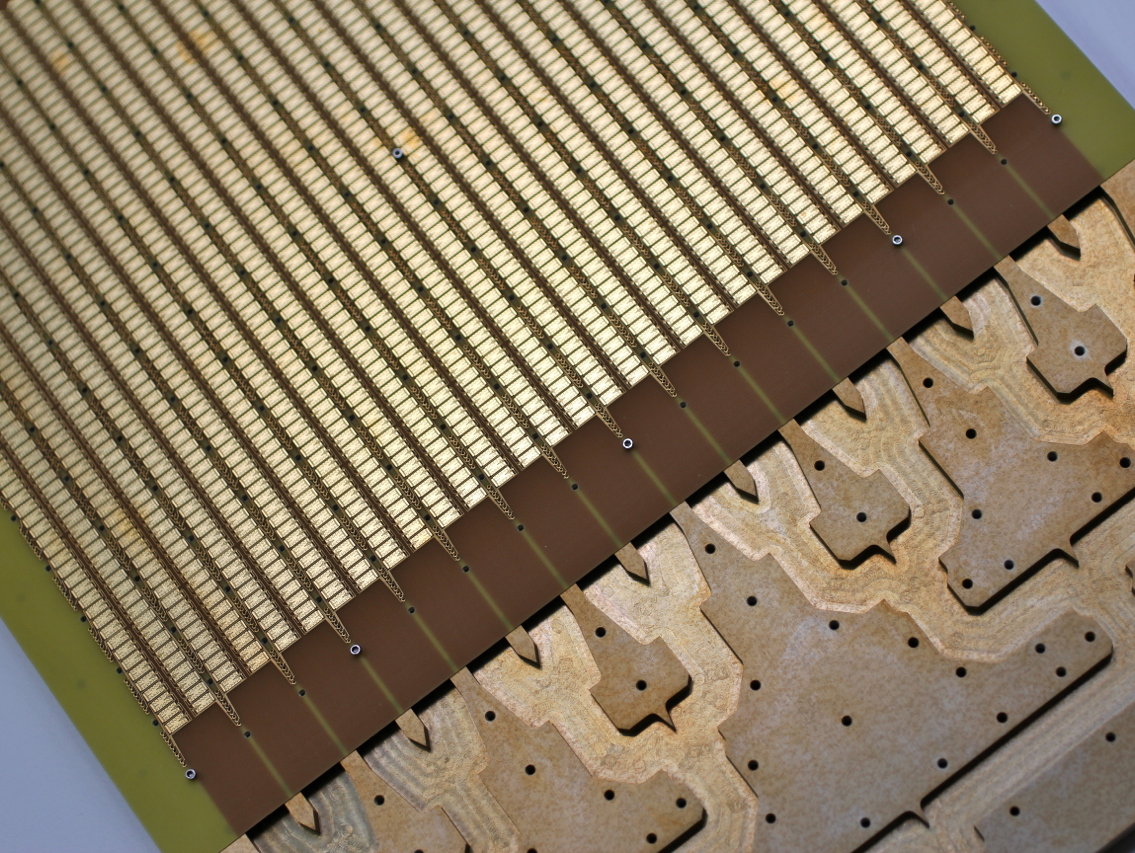Spotlight | Kymeta Corp. - SpaceNews

SAN FRANCISCO — When Nathan Kundtz first introduced Vern Fotheringham to the idea that man-made materials could be used to create thin, lightweight, low-power satellite antennas, it took a few minutes for Fotheringham to grasp the significance of the technology.
“I was listening to this rather arcane scientific description when suddenly I started to connect the dots with my own experience,” said Fotheringham, Kymeta Corp.’s chairman and chief executive, who has spent more than 25 years working in the field of broadband wireless and satellite communications. “I started to think how the technology would impact virtually every dimension of the satellite communications industry.”
Kymeta’s technology is being used to create flat, beam-steering antennas to offer broadband communications to boats, business and regional jets, automobiles, trucks, trains and unmanned aircraft. The 1-year-old company has not yet revealed plans for many of those products but announced a contract in March with mobile satellite service provider Inmarsat to develop a flat-panel antenna. The Kymeta Aero Antenna is designed to give business and regional jets access to Inmarsat’s Global Xpress high-speed Internet service.
“Flat panel satellite antennas will enable business jets of any size to access high-speed broadband connectivity globally through Inmarsat’s Global Xpress Aviation service,” Miranda Mills, Inmarsat’s president of aviation, said by email. “The antennas will deliver a new level of broadband speeds, data rates and bandwidth not previously enjoyed by business jet customers, which will be akin to the service they receive at home or in the office.”
Inmarsat anticipates strong demand for its Global Xpress Aviation service as 10,000 business jets are scheduled to enter service during the next decade. Executives traveling in those aircraft need broadband connections to remain productive, Mills said.
“It is this absolute requirement to keep executives connected, wherever they are, that is driving demand for solutions which support smaller aircraft,” she added. “Our partnership with satellite technology specialist, Kymeta, will make business jet travel an even smarter and more efficient option for executives.”
The Global Xpress constellation of Ka-band satellites is scheduled to offer global broadband communications beginning in 2015. Kymeta plans to deliver prototype units to London-based Inmarsat in late 2014, Fotheringham said.
Kymeta also plans to develop a portable satellite terminal the size of a large laptop computer and designed to transmit data at a rate of two megabits per second and receive data at a rate of 20 megabits per second. That terminal, which is scheduled to be released in early 2015, could be used to support oil and gas exploration, news organizations, military exercises and disaster relief, Fotheringham said.
Kymeta was established in August 2012 as a spinoff of Intellectual Ventures Management LLC, a firm based in Bellevue, Wash., that acquires patents and conducts research to identify promising applications for those patents. Kymeta’s early investors included former Microsoft Corp. Chairman Bill Gates, cable industry giant Liberty Global PLC and Lux Capital, a New York venture capital firm. In July, Kymeta announced success in raising an additional $50 million from Osage University Partners, a venture capital firm based in Bala Cynwyd, Pa., and the Kresge Foundation, a philanthropic organization based in Troy, Mich.
With that money, Kymeta will be able to address its near-term challenges: improving the performance of its basic technology, integrating that technology into innovative products and engineering those products for limited manufacturing, Fotheringham said.
The technology at the heart of Kymeta’s products is very straightforward from an engineering point of view but can be challenging to manufacture because “it requires great precision,” Fotheringham said.
In April, Kymeta’s engineering team built 40 prototypes to obtain eight satisfactory modules for the company’s first receive-only antenna. By August, the team obtained eight functioning modules after producing only nine prototypes, Fotheringham said. To obtain that type of improvement, Kymeta has augmented its staff, which now numbers 65, with experts in the fields of manufacturing engineering and precision metrology, he added.
That extreme precision is needed because Kymeta uses thousands of individual metamaterial elements to create antennas 1-centimeter thick that can steer a microwave beam electronically toward a satellite in orbit. The antenna can shift the beam to remain locked on one satellite or direct the beam toward another satellite.
“Kymeta has a unique antenna technology, which rivals the performance of a phased array, in a small, portable package,” said Peter Finalle, information and communication technologies analyst at Frost & Sullivan, a consulting and market research firm based in Mountain View, Calif. “This cuts down on complexity and cost, as there is no need for phase shifters and their accompanying components.”
Finalle added that the physical size and shape of Kymeta’s antennas will make them more suitable for mobile applications than traditional mechanical terminals and “help them address the growing need for high-speed mobile communications for ground vehicles, aircraft and water craft,” Finalle said by email. Even for fixed applications, the unobtrusive design of the antennas will make Kymeta antennas easy to integrate with a variety of structures, he added.
In April, Kymeta announced that it was able to receive a signal on one of its prototype antennas from a satellite transmitting high-definition direct-to-home television content. The 38-by-43-centimeter antenna was powered by a single USB cable and consumed less than three watts. “We use a very low power consuming technique,” Fotheringham said.
Related
ncG1vNJzZmiroJawprrEsKpnm5%2BifHSCmG1prKifqbmqs8etZKSxnZrBonnCqKmpZw%3D%3D